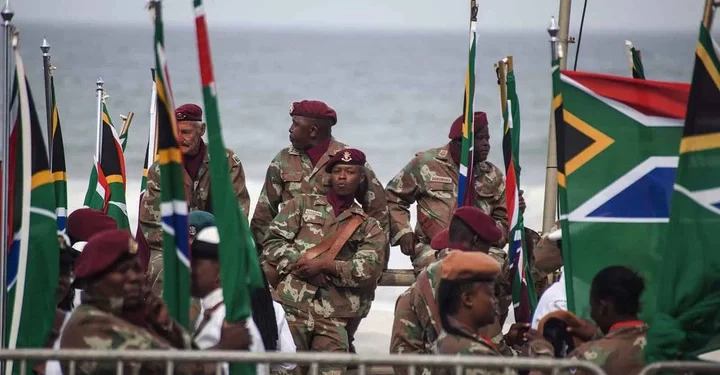When assessing the strength and capabilities of defense forces, various factors must be considered. In this analysis, we will compare the army capabilities of Poland and South Africa, focusing on their air forces, infantry, and special forces. Both countries have rich military histories and have made significant investments in their armed forces. Let’s examine the key aspects of each country’s defense forces to determine which holds the advantage.
The Polish Air Force boasts a modern fleet of aircraft, including F-16 Fighting Falcons, MiG-29 Fulcrums, and Su-22 Fitters. It possesses advanced air defense systems such as the Patriot and SAMP/T. Poland has actively participated in NATO’s air policing missions, establishing a reputation for maintaining a strong and capable air force.
The South African Air Force operates a diverse fleet comprising JAS 39 Gripen fighter jets, Hawk advanced trainers, and Rooivalk attack helicopters. Although South Africa’s air force is comparatively smaller than Poland’s, it has demonstrated its capabilities through regional peacekeeping operations and air surveillance missions.
Both countries have made significant strides in modernizing their air forces, with each possessing a capable fleet. However, due to its larger air force and active involvement in NATO operations, Poland holds a slight advantage in terms of overall air power.
Poland’s infantry comprises well-trained soldiers equipped with modern weaponry. The country emphasizes maintaining a capable ground force and possesses a sizable army with extensive combat experience. Polish infantry units have participated in international peacekeeping missions and showcased their proficiency through joint military exercises with NATO allies.
South Africa’s infantry is renowned for its combat experience gained from involvement in various regional conflicts. South African soldiers undergo rigorous training and are recognized for their discipline and resilience. Equipped with modern assault rifles and support weapons, the infantry ensures effective operational capabilities.
Both countries have skilled and experienced infantry units, prioritizing continuous training and modern equipment. South Africa holds a slight advantage due to its historical combat experience and larger ground forces.
Poland’s special forces, known as GROM, are highly trained and experienced in counter-terrorism operations, reconnaissance, and unconventional warfare. They have participated in international missions alongside allied special forces and earned respect for their professionalism and effectiveness.
South Africa’s special forces, particularly the South African Special Forces Brigade (Recces), are renowned for their expertise in counter-insurgency operations, reconnaissance, and specialized warfare. They have conducted successful operations both domestically and internationally, including anti-piracy missions.
Both countries possess exceptional special forces units with specialized skills and training. Determining a clear advantage is challenging, as both have demonstrated their capabilities through successful operations. The effectiveness of their special forces largely depends on the specific mission requirements.
In conclusion, the comparative analysis of Poland and South Africa’s army capabilities reveals that both nations have invested significantly in their defense forces, resulting in modern and capable militaries. Poland holds an advantage in air power due to its larger air force and participation in NATO operations. South Africa’s infantry benefits from its combat experience and disciplined soldiers. Regarding special forces, both countries possess accomplished units excelling in their respective areas of expertise.






















